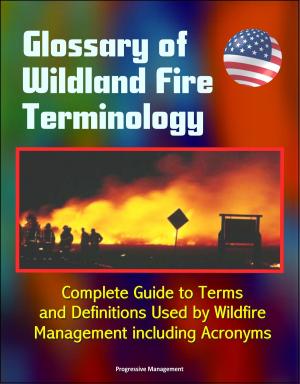A Complex and Volatile Environment: The Doctrinal Evolution from Full Spectrum Operations to Unified Land Operations (ULO) - Warfighting Functions Including ISR, Battlespace, Operational Art, FSO
Nonfiction, History, Military, Strategy, United States| Author: | Progressive Management | ISBN: | 9781370292523 |
| Publisher: | Progressive Management | Publication: | February 24, 2017 |
| Imprint: | Smashwords Edition | Language: | English |
| Author: | Progressive Management |
| ISBN: | 9781370292523 |
| Publisher: | Progressive Management |
| Publication: | February 24, 2017 |
| Imprint: | Smashwords Edition |
| Language: | English |
This excellent report has been professionally converted for accurate flowing-text e-book format reproduction. In autumn 2011, the US Army introduced Unified Land Operations (ULO) as its new operational concept, concluding the era of Full Spectrum Operations (FSO). FSO was the Army's operational concept during recent conflicts, including the wars in Iraq and Afghanistan. The Army transitioned to ULO based on voids in Army doctrine and terminology, the persistent need to nest with joint doctrine, lessons learned from Iraq and Afghanistan, and the necessary requirement to convey the Army's unique warfighting capabilities to outside organizations. In addition, the concurrent enactment of ULO and Doctrine 2015 made doctrine more accessible to Soldiers and leaders throughout the Army.
However, the adoption of ULO did not constitute a radical transformation of doctrinal thinking. To the contrary, there are only minor differences between FSO and ULO. Unfortunately, however, some of the adjustments unintentionally resulted in a confusing mix of original terminology and mature concepts. This monograph compares the two most recent doctrinal constructs and analyzes their key features in order to elucidate their compatibilities. Moreover, it argues that many of the allegedly new concepts, such as the core competencies and mission command, are carry-overs from Field Manual (FM) 3-0 Change 1, published in early 2011 as part of FSO. Ideally, this monograph seeks to assist future doctrinal revisions, while clearly delineating the similarities between FSO and ULO.
In 2011, the US Army adopted Unified Land Operations (ULO) as its new operational concept, officially ending the era of Full Spectrum Operations (FSO). FSO had been part of the Army's vocabulary for the better part of ten years, serving as its doctrinal construct that supported numerous warfighting missions, specifically in Afghanistan and Iraq. After a decade of persistent conflict, many Army leaders, including General Robert Cone, the Training and Doctrine Command (TRADOC) Commander in 2011, acknowledged the necessity for an enhanced doctrine. The new operational concept intended to support warfighters, who struggled to comprehend and defeat emerging and complex threats, which often dwarfed into a hybrid combination of conventional, unconventional, terroristic, and criminal elements. In other words, the introduction of ULO drew on multiple years of lessons learned to make Army doctrine compatible with the twenty-first century environment. ULO, with its evolving ideas of the core competencies of combined arms maneuver (CAM) and wide area security (WAS), mission command, and initiative, would help the Army meet many ongoing challenges and promote long-term success. In addition, ULO nested with the joint operational construct of Unified Action, while articulating to the public how the nation's land component contributed to national security.
This excellent report has been professionally converted for accurate flowing-text e-book format reproduction. In autumn 2011, the US Army introduced Unified Land Operations (ULO) as its new operational concept, concluding the era of Full Spectrum Operations (FSO). FSO was the Army's operational concept during recent conflicts, including the wars in Iraq and Afghanistan. The Army transitioned to ULO based on voids in Army doctrine and terminology, the persistent need to nest with joint doctrine, lessons learned from Iraq and Afghanistan, and the necessary requirement to convey the Army's unique warfighting capabilities to outside organizations. In addition, the concurrent enactment of ULO and Doctrine 2015 made doctrine more accessible to Soldiers and leaders throughout the Army.
However, the adoption of ULO did not constitute a radical transformation of doctrinal thinking. To the contrary, there are only minor differences between FSO and ULO. Unfortunately, however, some of the adjustments unintentionally resulted in a confusing mix of original terminology and mature concepts. This monograph compares the two most recent doctrinal constructs and analyzes their key features in order to elucidate their compatibilities. Moreover, it argues that many of the allegedly new concepts, such as the core competencies and mission command, are carry-overs from Field Manual (FM) 3-0 Change 1, published in early 2011 as part of FSO. Ideally, this monograph seeks to assist future doctrinal revisions, while clearly delineating the similarities between FSO and ULO.
In 2011, the US Army adopted Unified Land Operations (ULO) as its new operational concept, officially ending the era of Full Spectrum Operations (FSO). FSO had been part of the Army's vocabulary for the better part of ten years, serving as its doctrinal construct that supported numerous warfighting missions, specifically in Afghanistan and Iraq. After a decade of persistent conflict, many Army leaders, including General Robert Cone, the Training and Doctrine Command (TRADOC) Commander in 2011, acknowledged the necessity for an enhanced doctrine. The new operational concept intended to support warfighters, who struggled to comprehend and defeat emerging and complex threats, which often dwarfed into a hybrid combination of conventional, unconventional, terroristic, and criminal elements. In other words, the introduction of ULO drew on multiple years of lessons learned to make Army doctrine compatible with the twenty-first century environment. ULO, with its evolving ideas of the core competencies of combined arms maneuver (CAM) and wide area security (WAS), mission command, and initiative, would help the Army meet many ongoing challenges and promote long-term success. In addition, ULO nested with the joint operational construct of Unified Action, while articulating to the public how the nation's land component contributed to national security.















